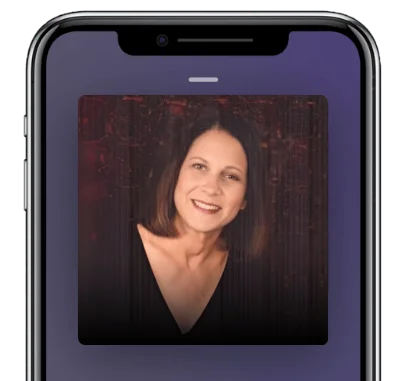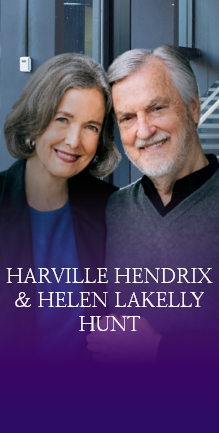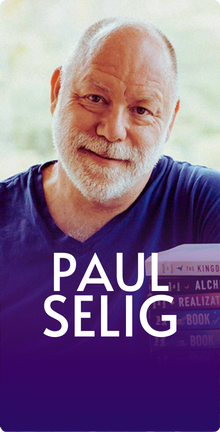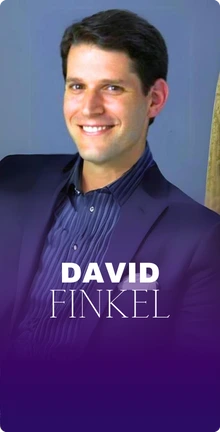In this Episode
- [00:38]Stephan introduces Debra Levine, co-creator of PRINT®️ assessment.
- [04:55]Debra shares how they developed the PRINT®️ assessment using their observations from Dr. Deming’s behavioral philosophy.
- [11:16]Debra highlights the effect of knowing your team’s PRINT®️ assessment scores, one of which is to strengthen work relationships.
- [19:32]Stephan shares his PRINT®️ scores, and Debra interprets how he can use that information for business partnership or opportunity.
- [25:42]Stephan shares a daily couple’s exercise he does together with his wife, Orion, and how it strengthens their relationship.
- [32:56]Debra shares how she and her husband, Paul Hertz, meet in the middle to avoid potential conflict, especially when it’s work-related.
- [39:15]Debra explains the process and parts of the PRINT®️ assessment, like addressing the root cause of persistent issues.
- [44:48]Stephan shares how words are powerful and explains the effect of channeling.
- [49:28]Debra describes how you can utilize the PRINT®️ assessment with your team and how they can be PRINT®️ certified.
- [55:31]Listen to the episode’s outro to get the $100 off special code to get your PRINT®️ assessment. Visit paulhertzgroup.com to know more about PRINT®️ Assessment.
Debra, it’s so great to have you on the show.
Thank you so much. I’m so happy to be here.
First of all, let’s start off by getting a little background for our listeners about PRINT® and what brought you to the point where you said there’s a need out there, we’ve got to create this thing. There are lots of assessments out there. Where did this inspiration and spark come from that turned into the PRINT® assessment?
Right. It’s got a very interesting evolution. I’ll try to keep it succinct because I could talk for an hour just on the evolution of PRINT®. Back in the early 80s—I’m going to date myself now—we were part of a consulting organization, the Paul Hertz Group, which we still are now, but we were involved in total quality management. The president of our organization, Dr. Paul Hertz, who’s kind of the brain trust behind all of this, was a colleague of Dr. W. Edwards Deming. For those who may not know who he is, he was the father of Japanese productivity after World War II. He was responsible for bringing methodologies that brought them into improving electronics, automobiles, and a host of other products and services. They then clobbered the US after they learned our techniques.
Deming was amazing and incredibly brilliant. He changed the world. I remember learning about him not just from taking courses and things like that, but also from the Money and You program, which was awesome. I don’t know if you’re familiar with that, but I got to learn about Deming and Bucky, Buckminster Fuller. Really cool.
PRINT® enables us to anticipate behavior and/or remediate if something goes awry in a much better way. Share on XThey were tremendous change agents of their time. They had a vision that no one else really had, and this was very early on. The fact that his principles are still in effect today, 35 years later, is really a testament to the fact that he had vision and foresight.
Deming’s principles had two parts to them. By the way, he was invited back into the United States eventually. He was on the circuit espousing his philosophy, if you will. Paul Hertz was one of his inner circle. He only had three people in his inner circle, and Paul was one of them. He was very fortunate to really learn from the master.
Deming’s principles and philosophy are two parts: it had a behavioral part, and it had a statistical part.
We then started our own organization because Deming was booked for the next 10 years, and they said to Paul, “Well, I guess you must know something. Could you come and help us out?” That was the serendipitous, fortuitous start of the Paul Hertz Group. But Deming’s principles and philosophy are two parts: it had a behavioral part, and it had a statistical part. The statistical part which is still in existence today under the aegis of Six Sigma. Things of that nature were very successful in terms of helping organizations improve their quality, productivity, reduce, rework, be more customer-focused, and all of the mathematics if you will. We had a team of industrial engineers and statisticians that were phenomenal in carrying that out.
Deming also had a behavioral side of his teachings, which was focused on managers communicating more effectively with their teams, and a more collaborative work environment. Basically, building a positive culture that supported this total quality endeavor. That was a very difficult thing for us. We found it extremely challenging.
In fact, what we observed more often than not was corporate dysfunction. We observed people who would hoard information, act out in meetings, not respond, or take other people’s credit or blame, a whole host of things that we still see today. But it was clearly the undermining influence of being successful with total quality management, and improving one’s productivity was this behavioral side.
We ourselves turned to the behavioral assessments and the personality assessments of the day to use to help us deal with this challenge to get people to be more collaborative, more respectful, honor the differences, and things of that nature. They were helpful. They gave a good, working, functional language to the differences between people, that we view the world differently, and that we have different ways of responding to situations, but we could not elicit the change that we needed to bring people into being less “dysfunctional.” Which led us to say, “Okay. We need to do something more and answer one singular question, which is why?” Why were people shooting themselves in the foot? Why were intelligent, well-intentioned, well-meaning individuals doing these things that were counterproductive to themselves and to others? We could not find an answer. That led us to the development of the PRINT® assessment, which answers the question of why. That’s really where it differs.
And that’s thus the name of the system, The Why of You?
That’s correct. The Why of You and PRINT®. We’re always asked, is PRINT® an acronym? It is not an acronym, it’s a nickname. It was originally Motivational Imprint because that’s what we’re trying to find out as our motivational imprint, but that was too long, so we just shortened it to PRINT®.
Got it, Motivational Imprint. There are obvious kinds of motivators that are driving people, but there are things that are under the surface that they may not even realize are driving them. That’s really what the PRINT® assessment is getting out. What’s below the surface that’s unconscious. Kind of like the iceberg, you only see the tip of it, but it’s very huge under the water.
Right. That’s what we use, by the way, that metaphor, to explain to people where PRINT® fits in and how it’s different from other assessments, but that’s exactly right. Would you like me to share that?
Yes, please do.
Okay, happy to. Really, I always say pictures speak a thousand words. These days we’re not on cruise ships, but if we were on a cruise ship and we were looking out over the side, we would see an iceberg. We could describe what we would see. Let’s say we’re in Alaska and it’s either large, it’s tall, it’s short, it’s craggy, it’s smooth, it’s light, it’s dark. Those are observable characteristics in our terminology. Those would be likened to my strengths, talents, what I like, what I want, and what I’m good at. These are things that defined my personality. I can describe them, and I can explain what they are.
However, if you are to live below the waterline as you said, there is a large mass of ice anchoring what we’re seeing above the waterline. In there, in our terminology, is the why. The causative agents for why we take the actions that we take, why we like the things we like, why we do what we do, why we think the way we think. It’s the causative factors, and we call those unconscious motivators.
We can sometimes look at them as our core motivations, but the key point is that they’re unconscious. Not from a Freudian perspective, but just meaning they’re not in our top of mind. I don’t walk around knowing that I want to be strong and self-reliant, and I want everything to be perfect, correct, and right, which is my unconscious motivators. Now they are, I’m very aware of them. If someone were to ask me what drives you, I don’t know that I would have come up with those per se, but when they were on earth, when I took the PRINT assessment, it was like, “Oh my God, that is exactly what motivates me.”
If one was to dissect the things that I do or say, or what I take an interest in and what career I pursued, and all of that, you would see those two unconscious motivators as really being the underlying drivers and influencing why I do what I do. That is such powerful information to have.
Yeah. It’s powerful information for the people around you to have to. When you describe your unconscious motivators, I’m like, “A-ha! That’s why we traded so many emails in preparation for this interview.”
There you go.
Got it.
But Stephan, you made a very important point about PRINT®. It enables us to anticipate behavior and/or remediate if something goes awry in a much better way. That strengthens relationships. It does the work that we’re going to do together; if we were on a team, I was your team leader, or were on my team working with me, that I can bring out your best as opposed to not because now you understood. The next time you and I would work together, you would send me 8000 emails and give me all the information that I needed because you know that’s what I need.
Right. I would send you some sample questions, even though I would say, “We might not even use these. But just for comfort, you’re going to know that you’re going to be totally prepared. This is going to be a perfect interview because we’re going to be focusing a hundred percent on what you’re good at, what you’re world-class at, the PRINT® assessment and the system.”
I’m able to calibrate then to you and, conversely, you to me. If I know all my team’s PRINT® assessments, then I can calibrate to all of them whether they report directly to me or report to one of my direct reports, because I have team members that I rarely speak to. But we all need to know what our PRINT® assessments are so that we can communicate and collaborate most effectively with them.

Yes. Can I share with you the danger also of not doing that? The best-case scenario is that we’re not helping to bring out other people’s best selves, which is the ultimate objective of PRINT®. It is for everyone to show up in their best version of who they are, their best self, and not their alternative, which is their shadow side, which I can talk about in a moment. But for them to show up that way and for others that they interact with to help them bring out their best self because there’s real interpersonal accountability that we have to one another in a work environment, in a family environment, or in any environment. We’re just not cognizant of that information.
The best-case scenario is we don’t bring out the best, and we don’t calibrate well. The worst-case scenario is we really exacerbate situations because we guess intent. I wrote to you and said, “Could I have some additional information?” That may have been a real trigger for you like, “Why is she bothering me? Why is she writing all of these things?”
You could have ignored me because that was something that wasn’t important to you. You wouldn’t have needed that information because you’re motivated by different things. Hence, you are a gentleman, and I appreciate that. But you might have said, “Oh, that’s not important. I wouldn’t need it” because we tend to do that. Not intentionally, not with malice, but that’s how we view the world from our own perspectives. You would not have given me that information. I would have been triggered, and our relationship could be strained instead of being best buds.
Yeah. The golden rule is not really treating people the way you want to be treated but treating people the way that they want to be treated.
And you know the name for that?
What’s that?
We call that the platinum rule.
Oh, nice. I like that. We’re also such good meaning makers. We’ll make up stories about, “Well, this person didn’t call me back because they don’t like me anymore. They probably heard this thing that I told this other person, and that got to them. This whole thing is spreading out of control. My reputation is ruined.” Maybe they just got busy, and they’re late for lunch or something.
Happens all the time. Our response is, because for me, on time is a very important factor. It goes with my one, wanting things to be perfect, correct, and right. I could easily assign intent, judge, and label, over personalize, and anyone of those distorted reactions is going to bring out the shadow side of me. It’s going to bring out the worst. I’m going to become angry, irritated, frustrated.
Maybe when you walk in the door, I act out a little bit or say something a little too direct or blunt. I mean, I have to be mindful of that; that’s what’s happening. But if you understand that, maybe you show up at my meeting on time and another one is not that important because we all have different things that trigger us. We all have different unconscious motivations. We have to learn about one another.
You use that very important, powerful word, trigger. I remember learning—I don’t know if it was some sort of Buddhist monk or something along those lines—the concept that a person who is without triggers has shed all of those attachments and those stories. I’m doing a terrible job explaining.
No, no. That’s actually a very good description of it. That’s exactly right.
Okay, cool. I want to learn more about these triggers. Can I still have some?
That would be the nirvana. People do, believe me. I’ve been doing this for a long time. If we could all be at that place where we have no attachments, and we’ve released all of those things that really vex us, then we will have really evolved to the most beautiful state, but it’s a process. We have to be realistic, and we are humans. The human condition is such that we do want to get our needs met. We don’t just say, “Okay. That’s cool.” That’s the human condition.
We need to be aware that these incident triggers are kind of assaulting us and our unconscious motivators. They’re keeping us from getting our core needs met and have a level of mindfulness or tools available to us so that we can stay in the best self in spite of. Ultimately, shedding them, we’re very happy if we could just mitigate them a little bit and lessen the intensity.
Kind of in the past a little bit, so it doesn’t spiral out of control, you catch it early.
Exactly. Make the best self-choice. It’s all a choice. We can respond to the high road or the low road. For me, as my eight, my primary unconscious motivator, someone says no to me, I can be the assertive-compassionate, or I can be the aggressive-annoying. That’s a choice. I am aware that that’s a trigger for me, and then I have to be mindful of the choice that I make. I have ways to breathe and think equanimity as opposed to what might come up automatically for me. Practice being another PRINT®, act as if, fake it until you make it. I’m going to be like a two who’s kind of cool and mellow. There are lots of things we have available to us to respond and be our best selves.
Okay. You mentioned eight, and you mentioned two. That reminds me of my PRINT® scores; my major is two, and my minor is eight.
The ultimate goal is for everyone to show up in the best version of who they are. That is their best self and not their alternative, which is their shadow side. Share on XI knew that.
Okay. You did your homework on me.
Of course.
Very nice. Okay. Let’s explain to the listeners what that means and how we could use that information if, for example, a listener was going to approach me with some offer, some strategic alliance, or partnership-type opportunity.
Okay. How would you use it or how you would use it together?
No. Everybody who’s listening to this episode knows my PRINT® assessment.
Got it. Okay, great. What that means is—later, I can share what the nine are—your primary, unconscious motivator, the need that you want to have met most is feeling needed, appreciated, and validated for yourself. Also, you want to make sure other people’s needs are being met.
If somebody was to approach you with a very opportunistic opportunity, but it didn’t have the good for other people associated with it, it might not be as attractive as one that really showed that you were helping and supporting others in whatever facet that would be. They would know about you. It might be what opportunity they bring your way, it may also be the way they presented to you, what they focus on. It’s very useful in that regard.
The eight-part of you, which is your minor of the nine, is my major, which is wanting to be strong and self-reliant. If they brought you something that was not going to give you autonomy, latitude, input, equal footing, that’s probably not going to be as attractive for you as something that elevates you in the way of being a decision-maker and having a say, because that’s important to you as well. Would you agree?
Totally, yeah. I have yet to offer my services, a white-label, for example, where they strip my name and my reputation from it and provide the deliverable in their own name.
And that would be predictable. Yet, other prints would jump on that opportunity in a heartbeat because that’s not their core value if you will or the thing that really juices them. They might be looking at financials. They might be looking at the role that they play. Maybe some prints would prefer actually not to be at the forefront. They would prefer to be not secondary but maybe not the face of. That’s not important to them. Others, it would be totally the image. They have to have their face splashed everywhere and their name everywhere. It really varies based on one’s unconscious motivators.

Yeah. I don’t think of myself as arrogant and yet I still want to make sure that I publish books and that whenever possible, my name is the first author. The book I’m most known for, I’m not listed as the first author. It was basically a chance that this whole story is ridiculous. It was supposed to be the first letter in the first word of the next day’s New York Times top headline was going to decide if it was me or Eric was going to be the first author of The Art of SEO, which is this talk about trying to be self-reliant and kind of prove myself. That’s why I have a thousand-page book that I co-authored. It’s pretty crazy, this thing is a beast. It’s a random chance that I am now the second author and continue to be with each new addition instead of the first author. It was this ridiculous idea of the other authors saying, “Let’s just pick the New York Times top headline instead of a coin toss.” Yeah.
But you do feel validated in spite of?
Well, it’s certainly a very effective big business card. When I hand it to prospects, they’re like, “Thank you for that. I really appreciate it. I’m never going to read it. Can I just hire you?” And that’s music to my ears.
But you know that your blood, sweat, and time went into that, right?
Yes. It is an incredible book.
And it’s a valuable resource.
It’s the bible for SEO. A lot of people learned SEO by reading that book.
Nothing could make you happier knowing that you helped other people do that because that’s what you’re all about.
For sure.
And it isn’t for self-gratification. It’s really for helping others.
No, they never paid me a dime. I make almost no money off of the royalties, and that’s totally fine. It’s pretty fascinating. My wife, Orion, is also in Strategic Coach, but she hasn’t taken this assessment. It’s not like the Kolbe assessment that’s included free with your new Strategic Coach membership. I paid the extra amount to do this assessment, and I got such great insights from it. I did tell my wife about it, and I think she’ll take it. She hasn’t taken it yet.
The beauty of doing that is that when you look at the two, why do you report side-by-side? You will recognize one another’s best self side, which is our authentic self. It will engender you and motivate you to want to help bring out that part of your partner because that’s what you fell in love with, that’s what you really cherish and honor about them. You will recognize the shadow behaviors that come up, maybe not all of them, and you’ll giggle about that and go. Hopefully, she’ll recognize as you recognize in yourself that there’s enough self-awareness. But it will also motivate you to recognize that you may be a party to bringing some of those out and vice versa.

Then, you’ll get to the trigger page, and you’ll look at them, and you’ll go, “Oh, I do about 5 or 6 of those 14. I do about 10 of those.” She’s going to look at it and go, “I do the same.” Then, you’ll pick your deal-breaker ones, your big one, your top two, you’ll fist bump (or you elbow bump these days), and you’ll say, “Let’s go out of our way to not do that.” What is the alternative? She’ll say, “We can still get this done if you do it this way. If you support me this way, it isn’t a trigger for me,” and you’ll do vice versa for her. I’m sure you have a beautiful relationship, but it will be even more beautiful. My husband and I do it all the time. We look at our triggers all the time. We really are accountable to one another to bring out one another’s best self.
That’s beautiful. How does that show up for you guys in a daily or at least a weekly format? For example, for me and my wife, Orion, we do a daily appreciation every night. We learned this from Imago, specifically from Harville Hendrix. I had him on this podcast and his wife, Helen LaKelly Hunt. They were both on the show talking about, among other things, these daily appreciations they do, and they hadn’t missed a night in 18 years. I think that is so incredible. They pick at least three things that they appreciate about the other person, could be the same things as normal or could be new things every time and doesn’t have to be things they do, it could be just who they are, just the way they smell, or whatever, just things that they appreciate.
It’s never just three for Orion and me, we’re always going on and on, and it definitely strengthens our relationship. It’s such a great way to end the day instead of could you pick up whatever from the store tomorrow? It’s an appreciation. It’s gratitude and abundance. It’s really beautiful. We’ve been doing that for three or four years now, maybe even a little bit longer. We don’t get every day, but I would say we might miss a month, one or two days, and that’s about it.
That’s beautiful. That’s such a little thing to add to a relationship. It’s not a time suck by any means, it’s all about changing habits. That’s what it’s all about. What we do, we have our triggers on the refrigerator. We see them, we cut them out, and put them on the refrigerator because we’re always snacking. We go, and we look at one another’s triggers, and it’s just a little reminder.
I guess it’s a form of gratitude. I’m going to add gratitude to it, but what we do is at the end of the day because my husband and I work together as well as live together. He’s my life partner and my business partner. Paul Hertz is my husband, by the way.
Okay.
Okay. We’re all entangled. We will pick an incident of the day when we helped each other be the best self, and we will take an instant the day where we inadvertently may have triggered one another and how to best do it. We thank one another for responding in the best self or catching oneself in the act we would have triggered and didn’t. It’s a positive reinforcement that we do for one another.
If we need to replay something that maybe went a little bit awry, you’re not doing it at the moment when everybody’s all emotionally heated, we’ll do it afterward, and we’ll do it in a very nice, kind, and gentle way for learning. It’s all about learning.
That’s beautiful. I love that. I’m going to take some of the stuff on board. Hopefully, Orion, my wife, will like to do this too. Next time, you and I communicate. Hopefully, I will be able to say that we have our triggers on the refrigerator, that we’re more mindful of each other’s triggers and our own. We’re mitigating that and in our best selves more often.
Great. It’s not very difficult. It’s really just being conscious and aware. There are some preventative tools that you can use, but consciousness and awareness go a very long way.
So true. Amazing. These triggers are very much dependent on your major and minor. What do you call these?
Unconscious print. They’re unconscious motivators. Everyone has two. There are nine altogether. There are 72 different groupings, 72 prints.
And would you call those archetypes, or what would you refer to each of those 72 groupings?
Yeah, we don’t call them types because types are more personality assessment lingo. We just call them patterns. That’s the word we use.
If we could all be at a place where we have no attachments, and we've released all of the things that really vex us, we'll all have evolved to the most beautiful state- but it's a process. Share on XOkay. My pattern is 2-8, and there are 72 of these. Yours is eight-two, is that right?
Eight-one.
Eight-one, okay. You’re eighty-one, and your husband is what?
He’s a one-five.
How does that work well or kind of against the grain?
Let me back up for one second because I know the natural question is going to be, are there certain prints that are best with other prints? Because that always comes up.
Sure, of course.
Okay. Do you mind if I preempt that? I don’t want to preempt.
I think we should. Yes, I think we should.
Okay. I think this happens all the time it comes up. The reality is no print is better or worse off with another print. It depends on the degree of best self that you’re in. If you have two prints that are both in best self and committed to that, any two prints can get along famously. That’s basically the underpinning of all of this. No print is any better than another one. Nobody has a lock on leadership, marriage, the best parent. We go about it differently.
Nobody’s got the secret sauce to being the best of all this. We just go about it our own way. As long as we go about it in our best self, the other person honors the differences, so that’s at the bottom. But answering your question, my husband, his major is one. That’s perfect, correct, and right. We match, if you will, naturally on integrity, quality, precision, the correctness, things of that nature. That’s nice. Those are good values and fundamental places to really see eye-to-eye.
That makes a lot of sense when you think about taking all these learnings from total quality management and putting it into this perfect assessment that tells you all this insight that you didn’t have before. It makes a lot of sense.
I do have to share with you that there’s a bit of a stretch or a challenge for us, and that comes from his minor and my major. His minor is a five. Five want to be knowledgeable and smart. They like the clarity of information. They are data analyzers, they are very thoughtful, they cogitate over things, they’re great brains, but it’s an information resource modality. If I present something to him, he has to think about it, he has to ponder it. He may have to ruminate. He may have to get data to support it. He needs to understand it, theorizes about it.
Eighth’s kind of like our fire, fire, fire. Like we forget to aim and shoot. I’m moving at a very quick pace. More gut-oriented. He’s moving at a data pace, which might be a little slower. We’re aware of that, so we have to meet one another where we are and find a middle ground. That’s what makes it work.
That makes sense. What are some things that you do that might be ways to connect on that level, to meet in a happy place instead of potential conflict?
One of the things that I’ll do is if I need something quickly, I never give it to him at the last minute. I will pre-empt. I will say, “I need something on Wednesday, please. Here it is, three days so that you can take a look at it.” And he’s very appreciative of that. Yet, if I do need something quickly, I will say, “You’re the best to do this. You’ve got the insight. I’m okay if it’s half-baked, it doesn’t have to be a perfect solution.” If you even give me just two or three ideas, it’ll take me way further than where I am because that’s your intelligence, and it far surpasses mine. It doesn’t have to be the perfect solution. It’ll just be, “I’ll take it, half-baked.” He hates to give it half-baked, but he will under the circumstances. That’s how we meet in the middle.
Nice. All right. This idea of a shadow self-being when you get triggered, and you let it kind of turn into something. That concept I’ve heard before of the shadow self. I think Debbie Ford is an author who’s written about that quite a lot.
Very nice. A lot of shadow work.
Yeah. Are you pulling from some of her work or somebody else’s work around the shadow self to help kind of fill out the system?
Yeah. Everyone’s shadow work is rooted in Jungian psychology. It was really Jung who came up with the shadow. It’s the light side and the dark side. The genesis of it is that when we were young, the world around us was very scary, and we needed to survive, we developed tactics. There were survival modes to make it in the world.
What happened was that we’ve embraced those, we hold onto them. You fast-forward to being an adult and with a certain stimulus. They’re basically antiquated models, mental models, or paradigms that we still hold on to. But in the face of a trigger or a certain stimulus, it kind of engenders that ancient child response. I called her Little Debbie versus Big Debra. Little Debbie responds, and that’s where you get what we call the shadow response. It’s survival mode. It’s our fight or flight. For me, it’s usually a fight because that’s what eights do. For others, they withdraw, detach. It’s more of a flight than we have other ones. That’s the simplified version of it, but that’s what the shadow is. It all comes from Jung.

The way we work in the PRINT® model is that when our unconscious motivators are being met by the circumstances around us, we naturally show up in our best self. That’s our authentic, who we are. If our unconscious motivators are not being met for whatever reason, the job we’re doing, the people in our lives, somebody cut us off on the road, whatever those triggers are. Remember, we discussed earlier, we don’t just fold and go, “Oh, Okay. That’s cool.”
We amp it up a little bit, and we try to get our needs met. That trigger usually is eliciting that child response, that earlier response. I don’t call it negative, I call it an unproductive response, but it’s really an exaggeration of our best self, and we just go with the flow. That’s what we’re calling the shadow side. It’s not good-bad, it’s productive-unproductive. Shadow has a cost associated with it.
What we’re doing is when the shadow comes up. We’re conscious and aware that we’re just reminding ourselves to dial it back a bit to bring the adult version of who we are into play. There are many different ways of dealing with shadow: embracing the shadow, loving it. Yes, I embrace my shadow. It is a part of who I am, but if I stay in that place, it’s not as effective.
It’s unproductive.
It’s unproductive. If I can find a way to bring the best self version of it back, I went all the way around. I win, everyone else wins.
Yes, it makes perfect sense. If you were to, without meeting me, have heard my print style is two-eight—unconscious motivator’s the two, and then the eight is a minor—would you be able to tell that my shadow self would be inclined to withdraw? Would that be something that you would have ascertained just by knowing my two-eight?
Yes, but I can see a side of you that sometimes could lash out too and then feel really guilty after you do it.
Yeah, okay. I resemble that comment.
I think you would be more inclined to tune into somebody else’s feelings and feel hurt, sensitive, and may be taken advantage of. Your predilection would be more to withdraw rather than to attack. Is that true?
It is true.
Have you ever done the lash out? Actually, allow yourself?
Oh yeah.
But then, don’t you feel right after—
I feel lousy.
Lousy, lousy. I can lash out and feel not lousy at all in my shadow, but I don’t do that anymore. That’s me in my old self, my unevolved self. I’ve learned.
This is amazing. I really love this. You have a whole system to utilize tools. You mentioned mindfulness earlier, things that will help to stay in your best self and mitigate the triggers and the time that you spend in your shadow self. What does this system look like? I guess the entry point is just taking the assessment, so you know what your triggers are. You know how you’re wired, what you’re looking for unconsciously, and then you can start addressing those things.
Exactly right. We deliberately wrote the report, The Why of You report, to be fairly succinct and accessible, and it provides exactly the information that you just said. What are my unconscious motivators? That’s the most important. What do I look like when I show up and my best self? What do I look like when I show up in shadow? Which I have to own and name.
Those are probably who I am, maybe not all of them today, but I have at some point, and which are the triggers that would push me into shadow if I’m not mindful. That’s the key that’s in the report. That’s the essential, vital starting point, as you say. Then, what you do with it is the most important thing. We have many strategies, how to communicate with me to bring out my best self, how I communicate with others based on their PRINT®?
There are certain communication styles you should use with your wife, certain communication styles she should use with you, your direct reports, or your team. It’s not a one-size-fits-all. That’s the danger of all these people’s stuff, is that we use a singular approach that generally works for us but falls on deaf ears with other people.
Consciousness and awareness go a very long way. There's so much work involved, but the results are always worth it. Share on XThere are strategies for being a more effective influencer. There are strategies for selling. There are strategies for a whole host of them related to one’s print. But then the other part is the most important part of a team is not only learning your own print, but the prints of others are vital.
You don’t want to read 30 reports. We have encapsulated a fun way to understand other people’s numbers, what that means, how to approach them, how to not trigger them. We share our top three triggers, we share a top one, how do you bring out the best in me. We will take a compilation of a group and put them in a visual to see what they look like with a weighted average. It’s got some weighting where the best self has a higher weight than the shadow, and it’s a wheel. We see what the print influences are.
Then, we look back over strategies, and we go, “Oh, that’s why that one missed,” because all these prints that were dominant had all the voice and all the people that we needed, let’s say that, where the creative types had no voice. We can look forward and say, “How are we going to equilibrate that? How will we align the goals that we have with the print composition of this group?”
Maybe we only have one-seven. Sevens are very creative, they’re very innovative, they are very buoyant and positive. They really keep the team afloat, and they come up with fabulous ideas. But maybe there’s only one on the team, it’s only they’re minor, and they have no voice. That objective that we were trying to accomplish really needed that. We don’t have this data, how do we know we’re going to keep doing the same stuff repeatedly, and it’s hit or miss?
Right. Presumably, once you know that you have one person on the team and seven is their minor, we want to accentuate that.
Bolster it.
Yeah. Bolster it. That’s a good word. We could then implement some strategies which might be in the system already.
Absolutely. Part of the system. All parts of the system. The other part that you mentioned, which is vital, is how do I stay in my best self despite being triggered? That was the mindfulness tools we use in neurochemistry. We use a lot of Herbert Benson’s work out of Harvard. Changing habits, I mentioned that before. We have our own version of affirmations, which we call challenge statements. We use behavioral tools like, as I said, acting as if, kind of some behavioral modification, positive psychology. It’s an amalgam of different tools that resonate differently. Interestingly enough, different prints use different tools because they resonate differently.
That makes sense. In fact, when you said, act as if earlier, I’m like, “Yes, I like that a lot.” When you say fake it until you make it, I’m like, “No, no, no, that’s not the same. That is really different.”
That’s a great thing that you just said. We even have words to use and not use. I just wrote one-up the other day for a team that we’re doing this biotech company that is doing their webinar next week. I did one for phrases to avoid, and they’re hysterical like telling one of them, “Don’t say take a chill pill,” or, “Your advice isn’t needed.”
That would be very offensive, yes.
They are going to have a fun time because I deliberately wrote them funny. After all, this team, they’re crazy. They’re very productive, and they’re very intelligent, but they’re very strong-minded, and they’re not always tuned in to one another’s needs. I wanted to add a little levity to that. But yeah, words to say in Nazi, fake it until you make it, to you is offensive, right?
It’s like fingers on a chalkboard because I’m authentic, I’m transparent. I’m in integrity at least as much as possible, and to fake it until you make it is a poser, a pretender, or a con artist. That’s how I see it, at least.
Then it deserves a better definition. I’m appreciative of what you’re saying in terms of the wording where we’re saying is, “What you think about, you bring about. Your thoughts create.” If you can change your thoughts to think like a two like I’m always channeled in twos because I can be very aggressive and assertive. I want to channel the two who’s very tuned in to the way other people are thinking.
Yeah. This is so good because words are powerful, and you’d need to use them precisely, for instance, word channeling. I love channeling. I actually had a channeler on the podcast, Paul Selig, who did channeling at the end of the episode. It was so powerful. He was connected to another realm. It was incredible. If you’re intrigued, listeners, go check out that episode.
Yeah, I will.
That idea of channeling is I want to channel my higher power, my creator, my inner being, or something greater than me. If I’m channeling another print that has something I want to bring to the table. Still, I don’t see myself as being that strong in it, channeling or stepping into my best self or a better version of myself all resonate for me. Fake it until you make it doesn’t.
Good. I love that. Words are very powerful.
Yeah, for sure.
And that’s part of the program, by the way. Words to say and words to avoid. We get into a lot of detail. How to engage other people based on their print. We tend to not know how to do that. We offer all that guidance and support and a lot of intellectual property that is part of the program.
Let’s talk for just a minute about how to engage somebody who might be, let’s say, a seven for their major. They’re very creative, but let’s say that they are also very meticulous, precise, and so forth. That would be a one, right?
Right. You’ve just put a seven and a one together. What the unconscious motivator of the seven, by the way, is to enjoy life and be happy. That’s an interesting one that you brought together because that’s a bit of a dichotomy there. On the one hand, you have the buoyant, enjoyment, creative thinker.
On the other hand, you have a more intense, literal. You have the ambiguity, literal. You’ve got some dichotomies going on there which are very interesting.
Does that happen, though, in the wild, like in the real world, you have sevens and ones?
Yes, you do. They’re not the most frequent from a frequency aspect. When they’re in best self, they’re off the charts because they’ve really kind of mastered different realms of showing up. There’s a lot to do with that. What was the original question?
Everyone's shadow work is rooted in Jungian psychology. It was really Jung who came up with the shadow. It's the light side and the dark side. Share on XHow would you engage somebody who is using some of the tools inside of your system, there are some ways that you can take into account their major and minor, and then engage them in a way that they just feel heard, understood, empathize with, just like you were in such great alignment. You’re going to get their best self and their best work output or whatever if it’s somebody on your team.
For a seven-one, what I would do is I would focus on the things that both the seven and the one bring to the table. I would never start a conversation with a complaint. I would absolutely start with the positive and the possibilities because the seven sees possibilities. That’s who they are. They want to enjoy life and engage in as many opportunities available to them. The one wants things to improve and be better, a very visionary. I would only focus on the possibilities because that would definitely engage them.
If I started with what can’t be done versus what can be done, if I walked in negative complaining, we can’t do this, they’re turned off, and they’re gone. I’ll never grab them back. I would start with the possibilities, I would engage them to give their input because both that print is going to want to participate. I would keep it short and sweet. I wouldn’t go on, and on, and on, and on. I try to keep it somewhat logical, but I would definitely give them the floor.
If there were challenges and problems, I would save them to the end. I would position them maybe not as problems per se but challenges. How can we overcome them? I might even let them go off, think about them, and come back and discuss it at another time. I wouldn’t want to spoil the positive conversation that had positive outcomes, growth associated with it, and future because they’re going to look into the future. I wouldn’t want to mess that up and contaminated it with a lot of negativity. That would be right off the bat how I would handle seven-one.
That’s great. That makes total sense, and that really would get there the best out of them. If I were to use the PRINT® assessment across my entire team, would I buy just the separate PRINT® assessments for every person, or would I get a team assessment? How would that work?
We would do both. We would recommend that everyone has their own assessment because that helps. Self-knowledge is really important. For you, if it was your team, you would want to have their reports and have that available. But I wouldn’t stop with that because there’s debriefs that they would get or we have ways that they would learn, they would understand their own print and what it means. But the real value, besides just self-awareness and self-improvement, is understanding one another. That would be done in a webinar, where we learned about one another’s prints, and we work with that information. That’s what we do a great deal on the business side.
Is that part of the system?
Yes. It’s part of the system.
How much is the system?
It’s customized. We start with goals and needs, and then we work from there. It’s very affordable.
Okay. I’m interested, not that this was supposed to be a sales opportunity or anything. I’m very interested. I didn’t even realize from taking the assessment that there was an entire system that I could buy into. It kind of logically made sense that I would want my team members to take the PRINT®’s assessments as well. But all these great tools you’re talking about, the customized webinars and everything, sound fantastic.
We certify people, by the way. If you wanted to do that, you could actually become PRINT®-certified to bring that to your team or to whoever else that exists as well. With the one goal to have as many people in the world be their best self. That’s the mission.
That resonates, as you know, from my print style. Now, we don’t have a lot of time left, so I want to make sure that we give the next action for our listeners if they want to just kind of play with this. There are some assessments out there that have like a free component. For example, Sally Hogshead, who’s been on the podcast, has this Fascinate assessment. You can take a free version which gives you a little teaser. There’s also the DISC assessment on tonyrobbins.com that gives you a teaser. You pay for a full report. Is there something that we can send our listeners to that is completely free, giving them a taste or not?
I’m so sorry. We have been toying with this for so long. We have been racking our brains to try to figure out how to do a PRINT® Lite because we really don’t even have a consumer product. PRINT® is not a retail product, you can’t go to our website and just buy the PRINT® assessment. We would have to work an arrangement with you where you had a special access code for your network, your folks, which we would definitely do, and maybe even discount if they decided to move forward on webinars and things like that. We would have a strategic alliance to do that. But we don’t have a mini version.
Got it. That’s totally fine because, but it’s not for everyone, there are plenty of assessments that you can’t get a free version. Like Strengths Finder, I love that assessment, it’s only paid. I tell people, pay the money, it’s worth it. I’m really happy to hear that you would open this up for my listeners to be able to pay for the PRINT® assessment. Is there a special offer code or some sort of code that they would put in and would provide a discount?
Yes, we would do that.
Okay. Awesome. Do you want to make up code now? By the time this episode airs, I know this totally goes against your PRINT® profile, but if you made up a keyword now. Then this episode airs in, let’s say, three or four weeks, you’ll have time to get that up and to run. Make sure that it is in place before the episode airs.
Not in the moment, but I will get that to you, I promise. I will have an access code and a link. It will be just designed for your listeners, with a price point that will make reasonable, and then they can get it. We’ll talk about how they get interpretation? From Strategic Coach, we’re very reluctant to just give people an assessment without an understanding. Shadow behavior can be a little shocking. It may sometimes be seen in writing without an understanding like we did today. That shadow is just the exaggerated version of the best self, and we need to know how to dial it back. If you don’t really have that understanding, you could look at it and go, “I’m a bad person.”
Disassociates from the shadow instead of embracing and accepting your shadow.
Or rationalize it. Rationalizing it, there’s a lot of ways to go. That’s exactly right. You don’t want to disassociate from it. We have different ways that we can do that. We can have somebody who interprets. You saw that webinar that we recorded? We can do any number of those. Let’s say, with conviction, that your listeners will be able to take the PRINT® survey through you with a discount code, and you’ll make that available to them. You and I can talk offline about what that looks like. How’s that?
Perfect. That sounds great. What we’ll do is I’ll mention what that code is and give the instructions in the outro of this episode, which I’ll record later once we’ve had that conversation. You listeners stay tuned for the rest of this episode because I’m about to share that special code with you and how to get it.
Great.
All right. Awesome. Debra, this was fantastic, so enlightening, inspiring, and powerful. I really, really appreciate it. I’m sure our listeners appreciate it, too. If the listeners want to learn more about what you offer, about the Paul Hertz Group, about PRINT®, what website should we send them to just to learn more and to follow what you guys are up to?
Just go to Paul Hertz Group, our website.
.com?
Yup. That’s it. Just www.paulhertzgroup.com. If they want to reach out to me personally, a lot of the conversations are very individual, so I’m de***@************up.com. Just say who you are, how you heard about PRINT®, ask a question, and I’m happy to support you.
Amazing. Thank you so much, Debra. Thank you, listeners. We’ll catch on the next episode of Get Yourself Optimized. I’m your host, Stephan Spencer, signing off.
To take the PRINT® assessment, contact the Paul Hertz Group and mention this podcast to get it for $150 instead of $250.











